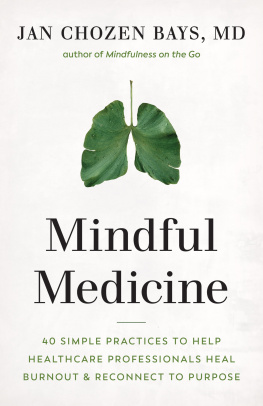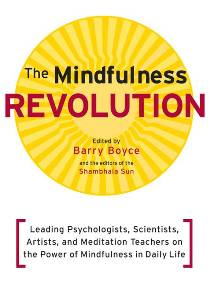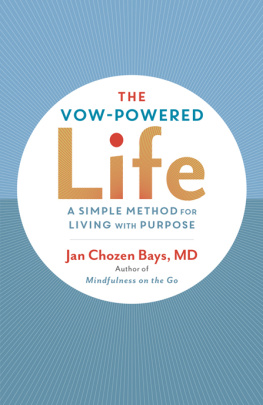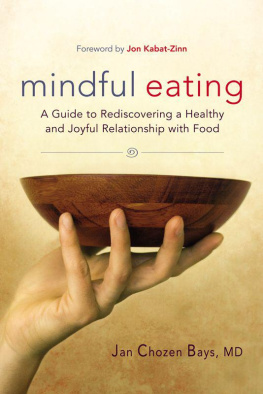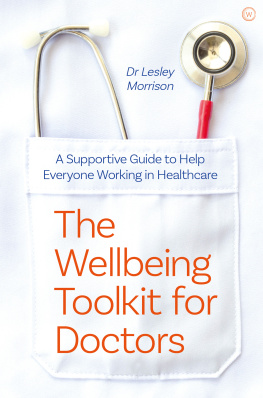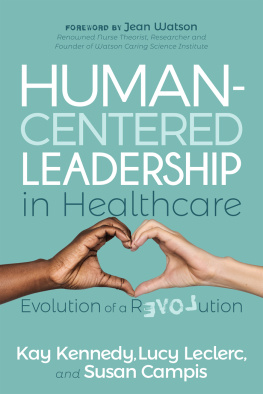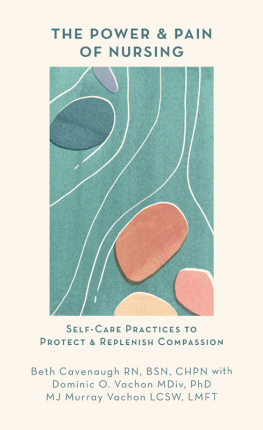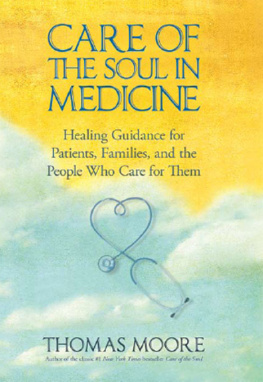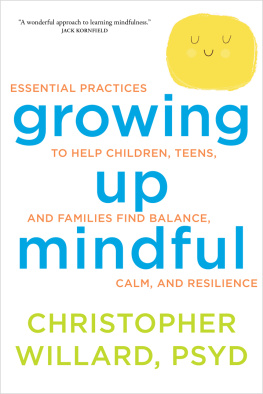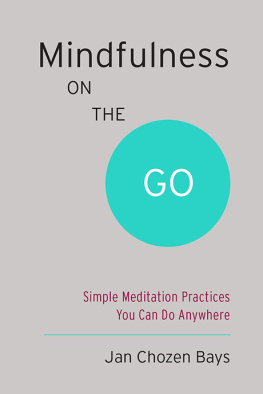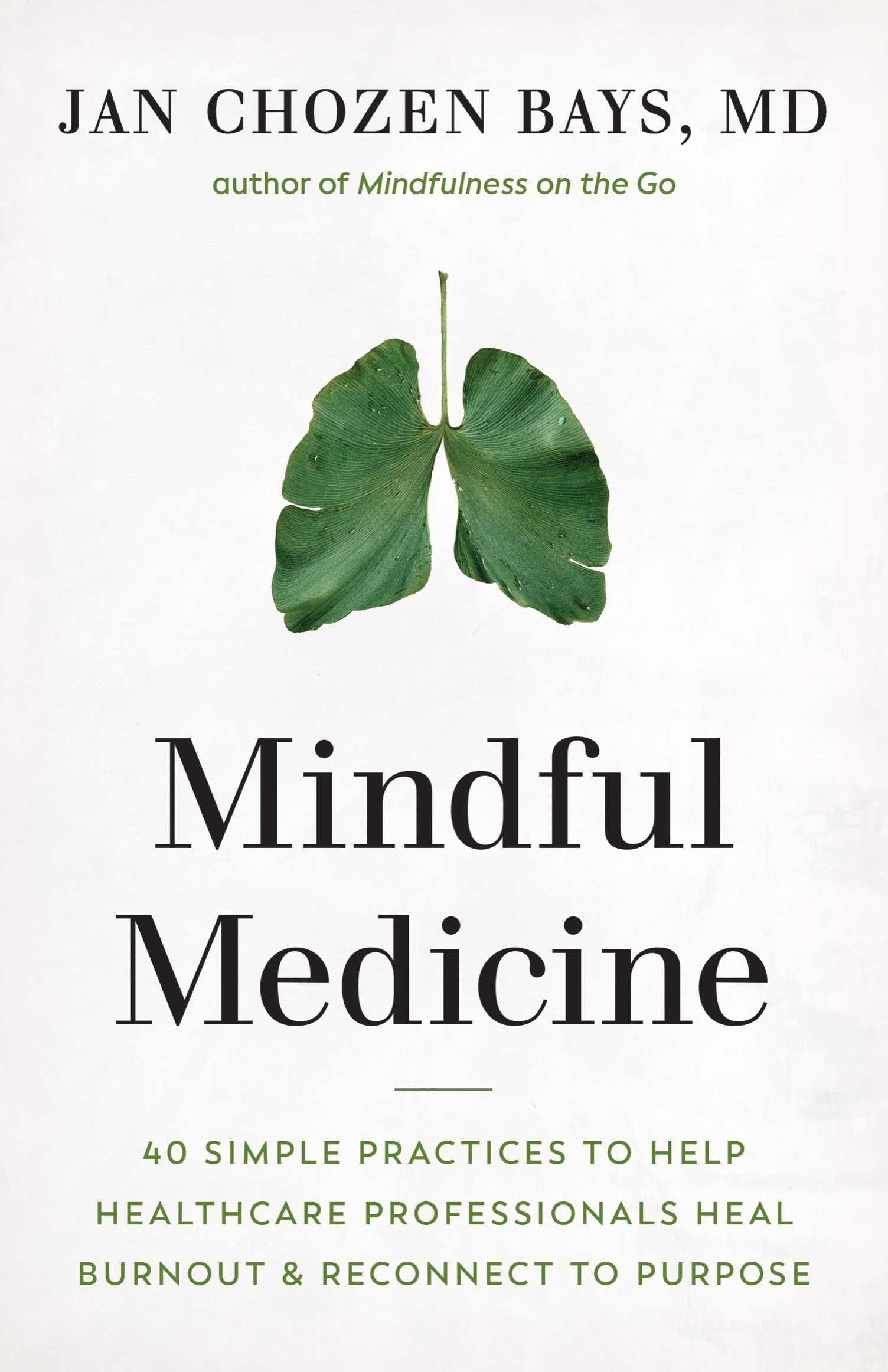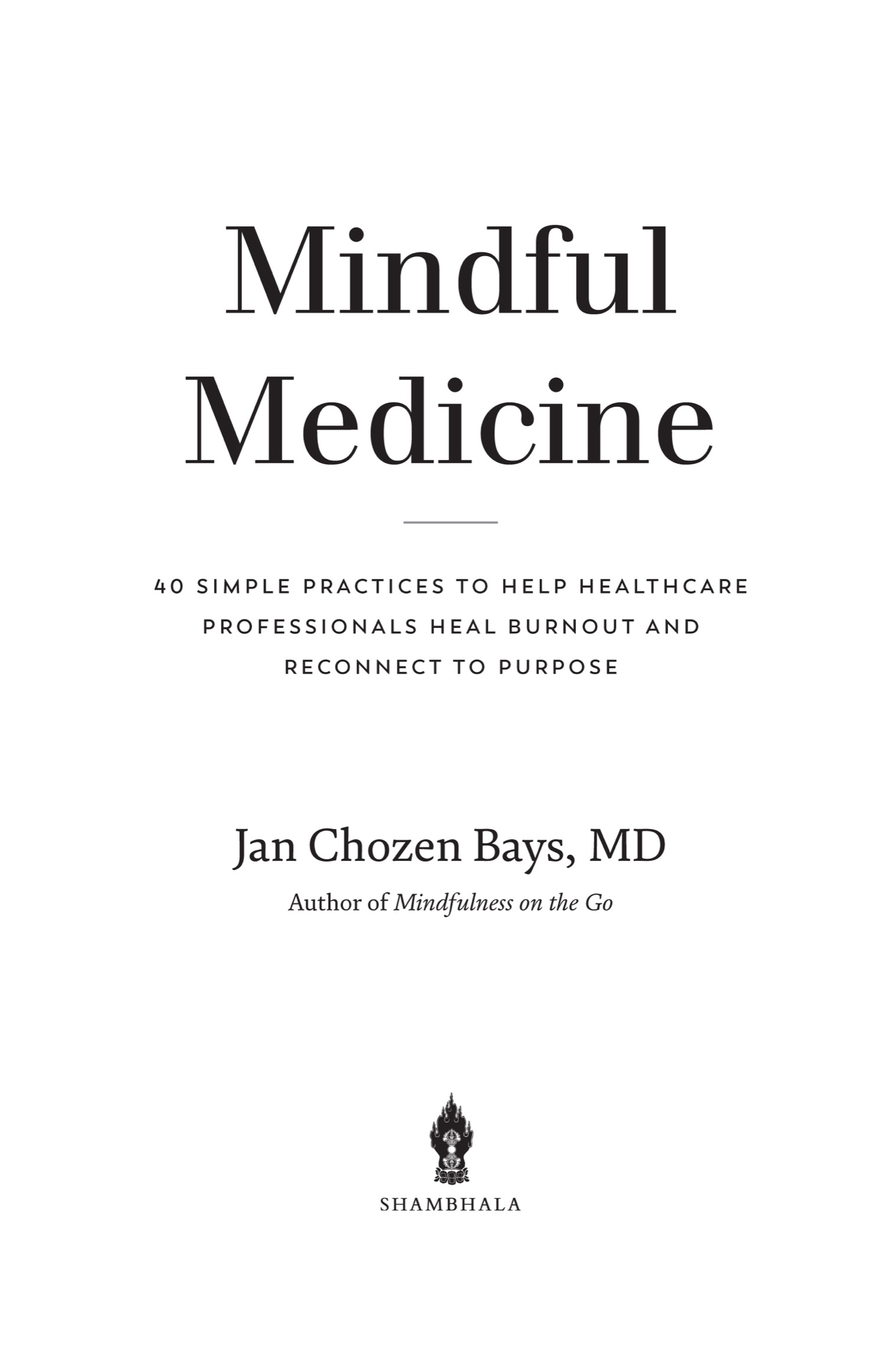Contents
Landmarks
Print Page List
Shambhala Publications, Inc.
2129 13th Street
Boulder, Colorado 80302
www.shambhala.com
2022 by Jan Chozen Bays
Cover art: Lightspring / Shutterstock.com
Cover & interior design: Kate E. White
All rights reserved. No part of this book may be reproduced in any form or by any means, electronic or mechanical, including photocopying, recording, or by any information storage and retrieval system, without permission in writing from the publisher.
First Edition
Shambhala Publications makes every effort to print on acid-free, recycled paper.
Shambhala Publications is distributed worldwide by
Penguin Random House, Inc., and its subsidiaries.
LIBRARY OF CONGRESS CATALOGING-IN-PUBLICATION DATA
Names: Bays, Jan Chozen, author.
Title: Mindful medicine: 40 simple practices to help healthcare professionals heal burnout and reconnect to purpose / Jan Chozen Bays, MD.
Description: First edition. | Boulder, Colorado: Shambhala, [2022]
Identifiers: LCCN 2021056872 | ISBN 9781645470526 (trade paperback)
eISBN 9780834844445
Subjects: LCSH : Mindfulness (Psychology) | Stress management. | Resilience (Personality trait)
Classification: LCC BF 637.M56 B39 2022 | DDC 158.1/3dc23/eng/20211217
LC record available at https://lccn.loc.gov/2021056872
a_prh_6.0_140574831_c1_r0
This book is dedicated to those who willingly enter the trenches of human suffering, impelled by a fundamental vow to help relieve the pain and distress of others. May it inspire, support, and refresh you as you do this most important work.
Contents
Introduction
I am a pediatrician. Ive worked at Kaiser Permanente and was on the faculty at a medical school. For thirty years, I worked in the field of child abuse at a hospital-based center in Oregon where we evaluated over one hundred cases of alleged abuse each month.
I know about physician burnout. From the inside. I know about compassion fatigue and secondary trauma. From the inside. I suddenly fell into these distressing states of heart and mind despite my forty-five years of sustained Zen meditation practice and despite all the markings of a successful career. I had published articles in medical journals and Buddhist magazines, lectured at international conferences on child abuse, learned acupuncture, established one of the first integrative medicine clinics in the United States, and taught meditation for decades. I had a happy marriage and family life and a lifelong, cheerful, and curious approach to everything I encountered.
How did this happen? When I had been doing child abuse work full-time for ten years, my father suddenly died of a stroke, and soon after, my Zen teacher also died. It is common for healthcare professionals to be able to maintain a demanding work schedule, coping well with frequent medical emergencies and tragediesuntil something falls apart in their personal lives. One Friday night, after a week of particularly horrible child abuse cases, I was driving home two hours late because of a last-minute emergency rape exam on a teenager. A soppy country song began on the radio, and I found myself crying and afraid I would not be able to stop.
Over the next few weeks, I lost my appetite and began coming in to work latejust five or ten minutesbut late. I noticed that I was reactive, irritated with the coworkers who were my best friends. A call would come in from detectives at 5:15 p.m., asking if they could bring in an emergency case, and I found myself making any excuse not to see the child and to send them to the emergency room instead. When our evaluations helped authorities remove children from abusive homes, I saw some kids return to our program after suffering worse abuse in their foster home than in their family home. I began to wonder if our work was truly helpful or not.
I needed to understand what was happening to me; I needed a diagnosis, so I began to read. I discovered that I had all the symptoms of burnout: physical and emotional exhaustion, depression, depersonalization, and doubt in personal efficacy. Burnout can happen to anyone in any profession, but it is particularly common among healthcare workers, emergency responders, and mental health and addiction specialists. When I realized the nature of my trouble, I also realized that I was likely the most resilient, equanimous person in the child abuse center where I was the medical director. If I was struggling emotionally and physically, I needed to learn about what was happening to me, the nature of my illness, and the treatment so that I could help myself and support my colleagues. Over the past twenty years, I have studied and lectured on burnout and developed mindfulness practices for people who work in the caring professions that can provide sustained well-being.
This little book is about what I learned. I hope it will be helpful for you.
The healthcare professions are in trouble. We lose more than one physician and nurse a day to suicide in the United States, the equivalent of two to three graduating classes of doctors and nurses each year. Among male physicians, suicide rates are 23 times the national average. Among female physicians, the completion rate of suicides is 2.5 to 4 times the general population.
First responders, including emergency medical technicians, firefighters, and police officers, also have higher suicide rates than average. More firefighters and police officers die by suicide than in the line of duty. A report on this phenomenon states, Suicide is a result of mental illness, including depression and PTSD, which stems from constant exposure to death and destruction.
I call this working in the trenches of human suffering, experiencing things that other people do not ever want to experience or even hear us talk about. As I write, the COVID-19 pandemic has only worsened this situation.
During that week when we had three horrendous cases in a row at our child abuse center, our entire staff was traumatized, stunned, and grief-stricken. We asked our hospital chaplain for help. She explained that in the course of an ordinary human life (in a peace-time, developed country), people typically experience one traumatic event, such as the death of a parent, and have time to process and recover their emotional balance over the course of about a year. In contrast, many medical professionals and first responders often witness highly distressing events and have no time to recover before they move on to the next case or disaster. The chaplain called it chronic acute stress and compared it to soldiers in wartime who must stuff their grief and horror and continue fighting. She advised that protecting ourselves against the effects of these events requires unusual methods and spiritual support.
The unusual methods and spiritual support I and other healthcare workers have found to be most effective are an armamentarium of mindfulness practices and a regular meditation practice. I hope they will be equally effective for you.
There are various theories about why the joy drains out of medicine for so many of us: graduating with student loan debt that can take decades to work off; assembly line medicine with constant increases in paperwork and administrative burdens, leaving no time for true connection with patients; long, inflexible work hours plus on-call hours, adding up to little time for your family or yourself; the challenges of dealing with insurance companies and bureaucracies that seem uninterested in the plight of your patients; frustration with electronic medical records; and the stigma of admitting that you, who worked so hard for so many years to get where you are, are unhappy.

